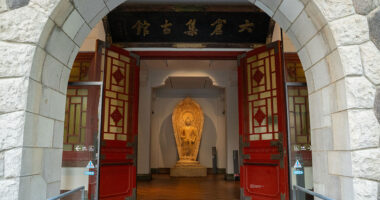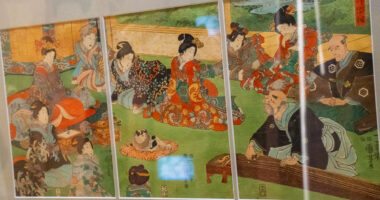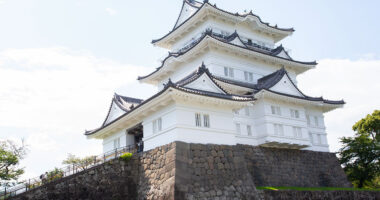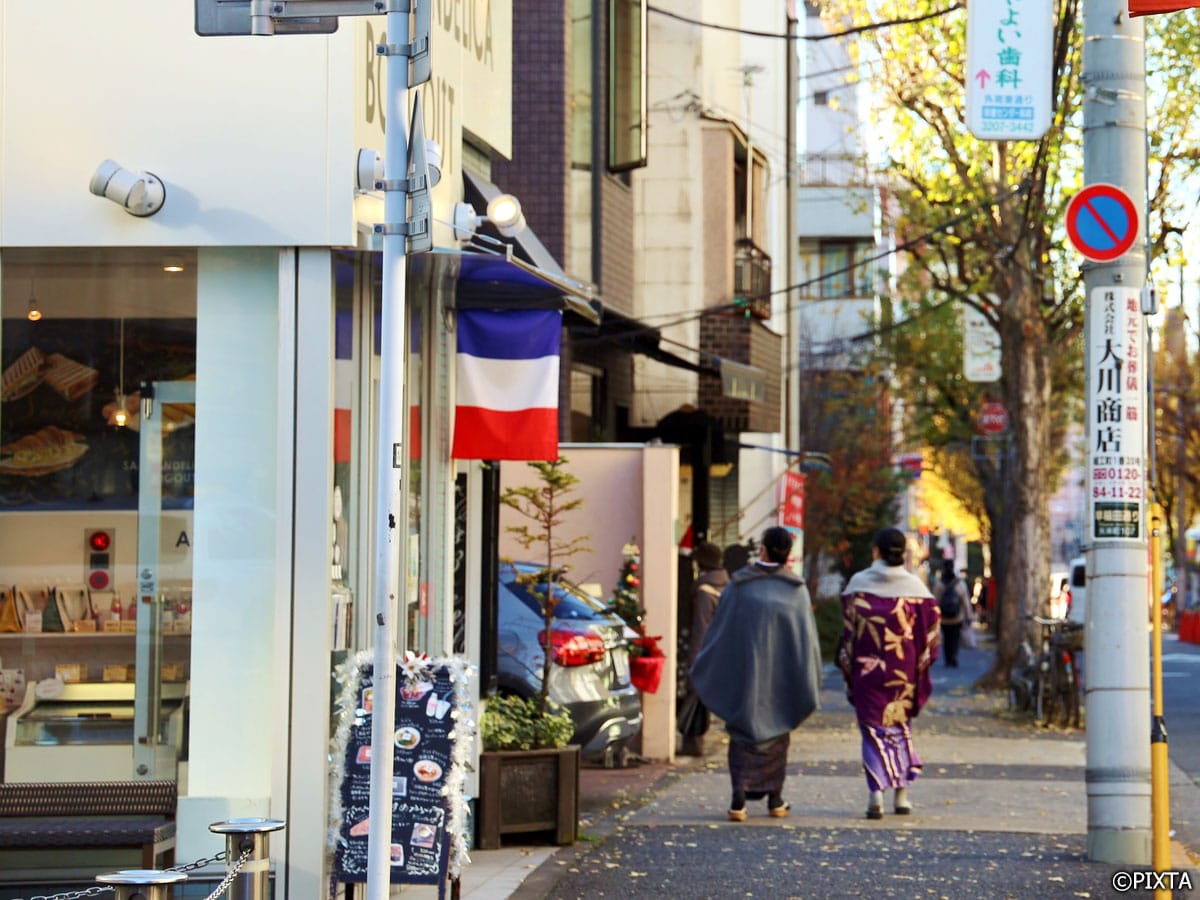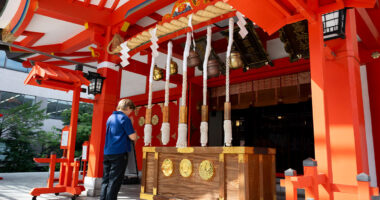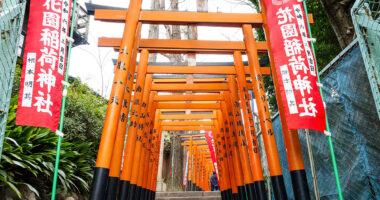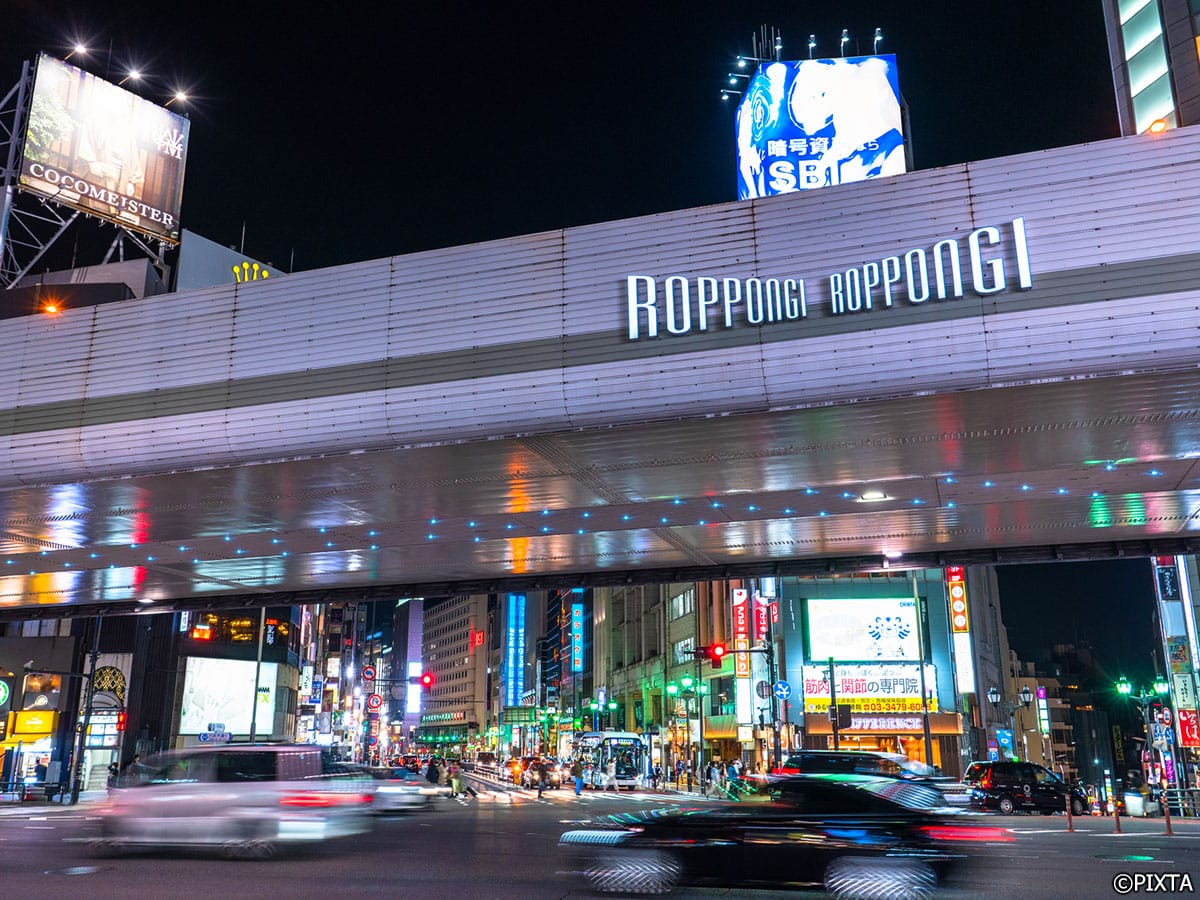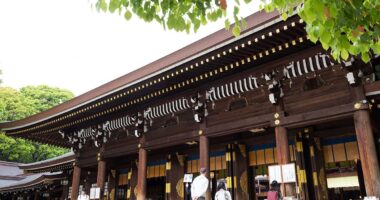Fushimi Inari Taisha is not only one of Kyoto’s most iconic destinations but also a deeply sacred site that has drawn pilgrims for centuries. While many visitors come to marvel at its famed torii gate tunnels, the true essence of this shrine lies in its 1,300-year history, architectural elegance, and spiritual resonance. In this article, we guide you through the heart of Fushimi Inari Taisha step-by-step—from its origin story to the cultural customs that make it a vital piece of Kyoto’s heritage.
- How to get to Fushimi Inari Taisha
- Step 1: Arriving at the Romon Gate
- Step 2: Learning the history of Fushimi Inari Taisha
- Step 3: Understanding the deity, Inari Ōkami
- Step 4: Exploring the main shrine complex
- Step 5: Discovering auxiliary shrines throughout the complex
- Step 6: Participating in seasonal ceremonies and rituals
- Final thoughts: Discover the depth beyond the torii gates
How to get to Fushimi Inari Taisha
Fushimi Inari Taisha is located in southern Kyoto and is easily accessible from major transit hubs.
Getting to Fushimi Inari Taisha by train
- If you’re coming directly from Kyoto Station, take the JR Nara Line (5 minutes) to Inari Station and head for the giant torii gate which you’ll see upon exiting.
- If you’re coming from the Gion neighborhood, take the Keihan Railway Main Line from Gion-shijo Station to Fushimi Inari Station (9 minutes), and walk eastward for about 5 minutes.
Practical details
- The shrine is open 24 hours a day
- Admission to the shrine is free
Tip: Visit early in the morning (before 9:00 AM) or late afternoon to avoid crowds, especially during weekends and peak seasons.
Step 1: Arriving at the Romon Gate
Your journey begins at the grand Romon Gate, an imposing two-story structure donated by daimyo Toyotomi Hideyoshi in 1589. This gate marks the official entrance to the sacred grounds and is flanked by guardian statues and lanterns that set the spiritual tone for what lies ahead.
Time required: approximately 10 minutes
Take your time here to soak in the details—the vermilion hues and the impressive architecture.
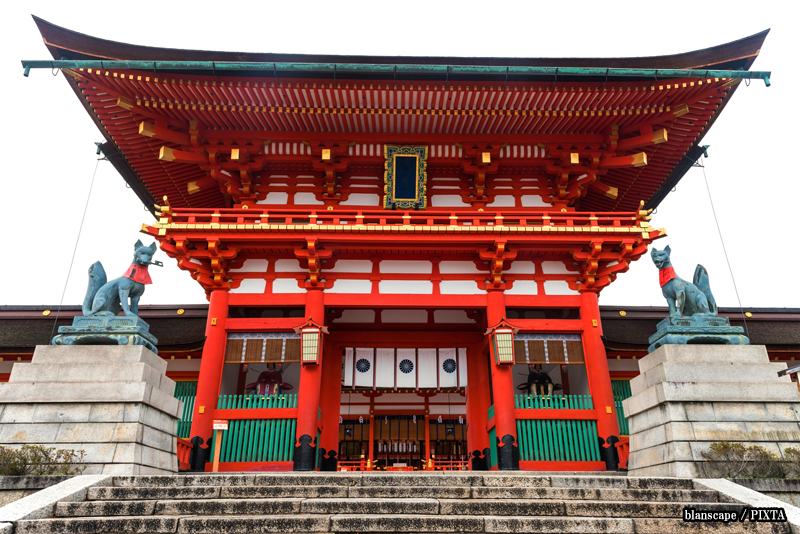
Photo for illustrative purposes
Step 2: Learning the history of Fushimi Inari Taisha
As you pass through the Romon Gate, you enter a shrine complex with over a millennium of history. Founded in 711 AD, Fushimi Inari Taisha is the head shrine of approximately 30,000 Inari shrines throughout Japan. Originally built on Mount Inari, it was relocated to its current location near the base of the mountain in 816 by the order of the monk Kūkai.
Over the centuries, it has served as a vital spiritual center for both the imperial court and common people, evolving into a place of worship for merchants, farmers, and travelers alike.
Did you know?
The name “Inari” is derived from the words ine-nari (rice becoming), reflecting its deep agricultural roots.
Step 3: Understanding the deity, Inari Ōkami
At the core of Fushimi Inari Taisha’s religious importance is Inari Ōkami, the Shinto deity of rice, agriculture, industry, and business prosperity. Worship of Inari dates back to the early 8th century, when rice was the foundation of life and currency in Japan.
Inari is also regarded as a protector of merchants, which explains why countless companies, from small family businesses to multinational corporations, donate torii gates to the shrine each year.
Note: While many associate foxes with Inari, they are messengers, not deities themselves.
Related article:
Learn more in our article, “Foxes and Fortunes: Understanding Fushimi Inari’s Symbols and Traditions.”
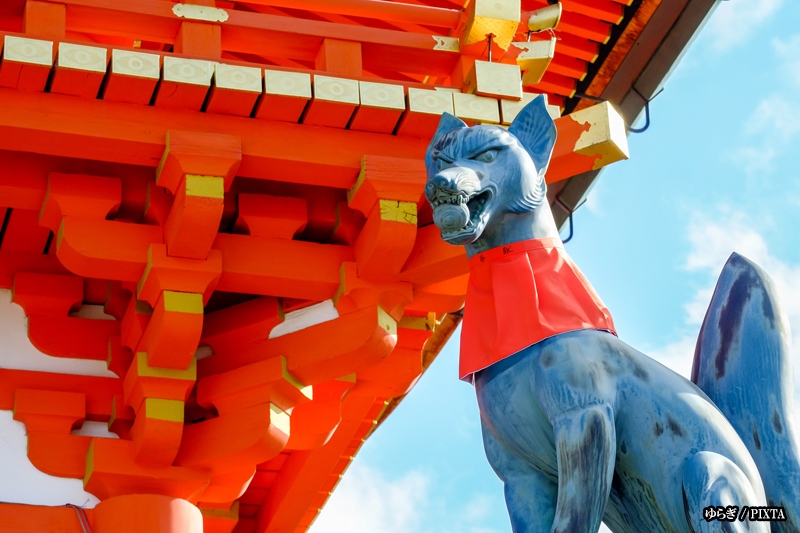
Photo for illustrative purposes
Step 4: Exploring the main shrine complex
The heart of the site is the honden (main hall), where visitors offer prayers. Built in 1499, it showcases elegant nagare-zukuri architecture with sweeping eaves and bright red lacquerwork. Here, you can observe the formalities of Shinto worship, from bowing and clapping to making offerings.
Highlights in the lower shrine area
- Gonden (temporary main hall): Used during major renovations of the main shrine.
- Kagura Hall: Occasionally used for kagura (sacred music and dance) performances.
- Omikuji (fortune) booths: You’ll find them located near the main hall
Time required: approx. 20-30 minutes
Spend time reading the multilingual signs that explain each building’s significance. Here and elsewhere in the shrine, photography is allowed unless otherwise specified, but behaving respectfully is key. Do not film or livestream people praying or any other people without their consent, and do not play music, sing, dance, perform, or use shrine facilities for purposes other than they were intended.
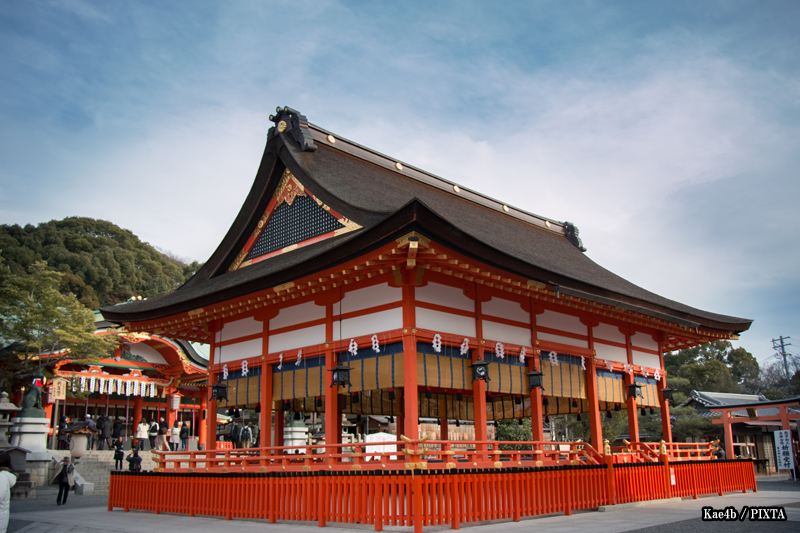
Photo for illustrative purposes
Step 5: Discovering auxiliary shrines throughout the complex
While the five main Inari deities are enshrined together in the honden where you begin your prayers, the Fushimi Inari Taisha complex extends across the entire sacred Mount Inari. As you continue your walk beyond the honden and through the initial torii gate tunnels, you’ll encounter countless smaller shrines and altars (known as hokora or o-tsuka) scattered along the paths up the holy mountain. These offer a quieter, more intimate atmosphere for reflection and prayer.
Key auxiliary shrine stops along the trail
- Okusha Hōhaisho: Located just past the initial “Senbon Torii” (thousand torii gates) tunnel, this is a very popular and significant spot for offering prayers and purchasing unique fox-shaped ema (wooden votive tablets).
- Mountain trail shrines: As you ascend the circular mountain trail, you’ll find numerous smaller, often unnamed, shrines and o-tsuka rock altars. These exemplify the pervasive nature of Inari worship and provide serene moments away from the crowds. Look for notable sub-shrines like Kumatakasha with its serene pond, among many others.
These countless auxiliary shrines, from the prominent to the humble, highlight the vastness of Inari worship and demonstrate how Inari belief has deeply blended with local customs and the sacred natural landscape of the mountain.
Pro Tip: Many of these smaller shrines are not listed on major tourist maps, making them ideal for those who seek a deeper, more spiritual connection and a less crowded experience.
Time Required: Allow approximately 30–45 minutes for casual exploration of the areas around the Honden and the initial ascent to Okusha Hōhaisho. A full hike of the mountain trail, encompassing many more auxiliary shrines, typically takes 1.5-2 hours.
Related article:
To learn more, read our article, “Walking Through Thousands of Torii: The Fushimi Inari Hiking Experience.”
Step 6: Participating in seasonal ceremonies and rituals
Fushimi Inari Taisha is a living shrine, with events and rituals held year-round that attract both locals and international visitors.
Key annual events
- Hatsumōde (first temple visit of the new year) – January 1-3: Over 2.7 million people visit during the New Year to make their first prayers of the year.
- Inari Matsuri (Inari Festival) – early February: The main annual festival includes a colorful procession and traditional music.
- Motomiya-sai – July: A mid-summer rite where the inner spirit of the deity is honored.
- Hitakisai – November: A fire ritual where old ofuda (talismans) are burned as offerings.
These events offer a rare opportunity to witness ancient Shinto customs in practice, often accompanied by food stalls and local performances.
Tip: Check the official Fushimi Inari Taisha website for the current year’s schedule if your visit coincides with a festival.

Photo for illustrative purposes
Final thoughts: Discover the depth beyond the torii gates
Most visitors recognize Fushimi Inari Taisha for its striking torii gate path, but few take the time to explore its deeper spiritual and cultural dimensions. From its foundational role in Shinto history to its ongoing community importance, the Fushimi Inari Taisha Shrine is far more than a photo spot—it’s a place where Japan’s past, present, and prayer converge. Step into the shrine grounds not just as a tourist, but as a participant in a centuries-old tradition.


